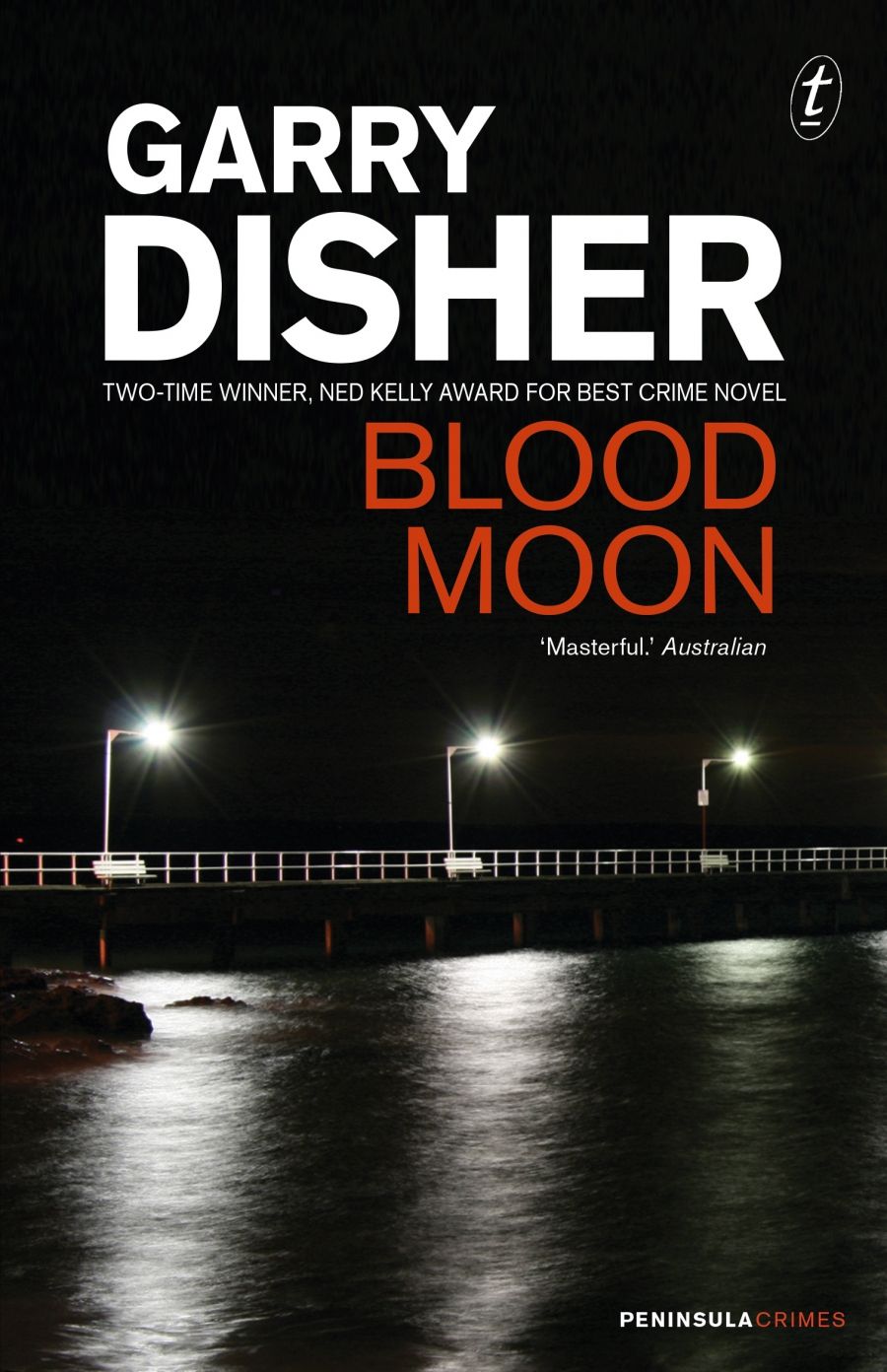
- Free Article: No
- Contents Category: Fiction
- Review Article: Yes
- Custom Highlight Text:
It is ‘Schoolies’ Week’, and Waterloo, on the Mornington Peninsula, hosts a crowd of teenagers who, for various reasons, shun more fashionable parties on the Gold Coast. The police try to ensure that the kids practise safe sex and don’t become victims of their own excesses with drugs and alcohol, nor of the ‘toolies’ who scavenge the festival fringes. Liaison officer Constable Pam Murphy, recently transferred to detective duties, has encountered few serious problems but warns her superiors that an impending lunar eclipse could produce ‘the ultimate high’.
- Book 1 Title: Blood Moon
- Book 1 Biblio: Text, $32.95 pb, 314 pp
- Book 1 Readings Link: booktopia.kh4ffx.net/QVO6M
Garry Disher is a prolific author who lacks due recognition. Like all good crime authors, Disher ensures that the plots in the Challis novels proceed at a credible pace. He has the ability to reveal evidence incrementally so that the reader does not feel patronised by detectives who seem too obtuse or too clever. Disher displays this skill throughout the whole Challis series, which runs to five novels, beginning with The Dragon Man (1999).
For ten years, Disher has drawn the relationship between Challis and Destry particularly well. Initially, Challis admires Destry as a colleague, but he has extreme marital problems, and she is married fairly happily to a traffic cop. Throughout the series, Challis and Destry grow closer. Challis’s wife, imprisoned for conspiring with her lover to murder Challis, is a constant worry before killing herself. Destry’s husband envies her and attributes her promotions to her gender and to favouritism from Challis, whom he spitefully calls her ‘lover boy’. In this fifth novel, Challis and Destry live together as lovers, but difficulties arise. The district superintendent warns Challis that he will not have them working together. Destry has doubts of her own, feeling guilty about her secret ethical faults and also wanting independence. Fans of the series might be relieved that Challis and Destry are together, but Disher tells enough of past events to ensure that all readers of Blood Moon appreciate the charged atmosphere prevalent at Waterloo.
While the assault investigation proceeds, a member of the Peninsula Council’s planning staff is murdered; again, there are numerous suspects. The Waterloo area is changing socially. Some developers, builders and residents have little respect for heritage buildings and protected trees. Infringements officer Ludmilla Wishart encounters people who are angry, abusive and sometimes litigious, and also suspects that her boss, Athol Groot, is corrupt. As if she does not experience enough aggravation at work, her insecure husband Adrian nags her about her weight and her wastefulness, and is jealous of her best friend, Carmen.
In Disher’s hands, the crime novel is multi-layered. In Blood Moon there is suspense, and there are mysteries to be solved, but the novel’s unique strength arises in Disher’s cast of characters and the convincing way that he handles their imperfections. Without any trace of intrusiveness or didacticism, Disher uses an intricate web of relationships to expose hypocrisy and question popular notions of justice. The uniformed Constable John ‘Tank’ Tankard, for example, has been rash and unstable, but he is beginning to grow up. He fancied Pam Murphy when they were partners and resents her move to plain clothes. He also envies the smooth city boy Andrew Cree, his new partner, who finds immediate favour with Pam. Betrayed by Cree, Pam enlists the aid of Caz, a young woman who has developed appropriate methods for visiting revenge upon sexual abusers. In contrast to Cree’s nasty attitude and Pam’s calculated vengeance approach, Tank’s naïve but essentially honest behaviour seems relatively mature.
Disher writes so clearly about the physical environment, the social atmosphere, the impact of change and the interactions between the people of Challis’s Waterloo that it is easy to overlook the depths of analysis that he provides. Blood Moon is entertaining and stimulating, and very nearly perfect in construction. It leaves the reader wanting more of Disher’s plotting skill, and wondering about the next twist in the complex relationship between Challis and Destry. Because Disher does not write to a formula and enjoys his literary work, Blood Moon gives the reader a rare sense of satisfaction.


Comments powered by CComment